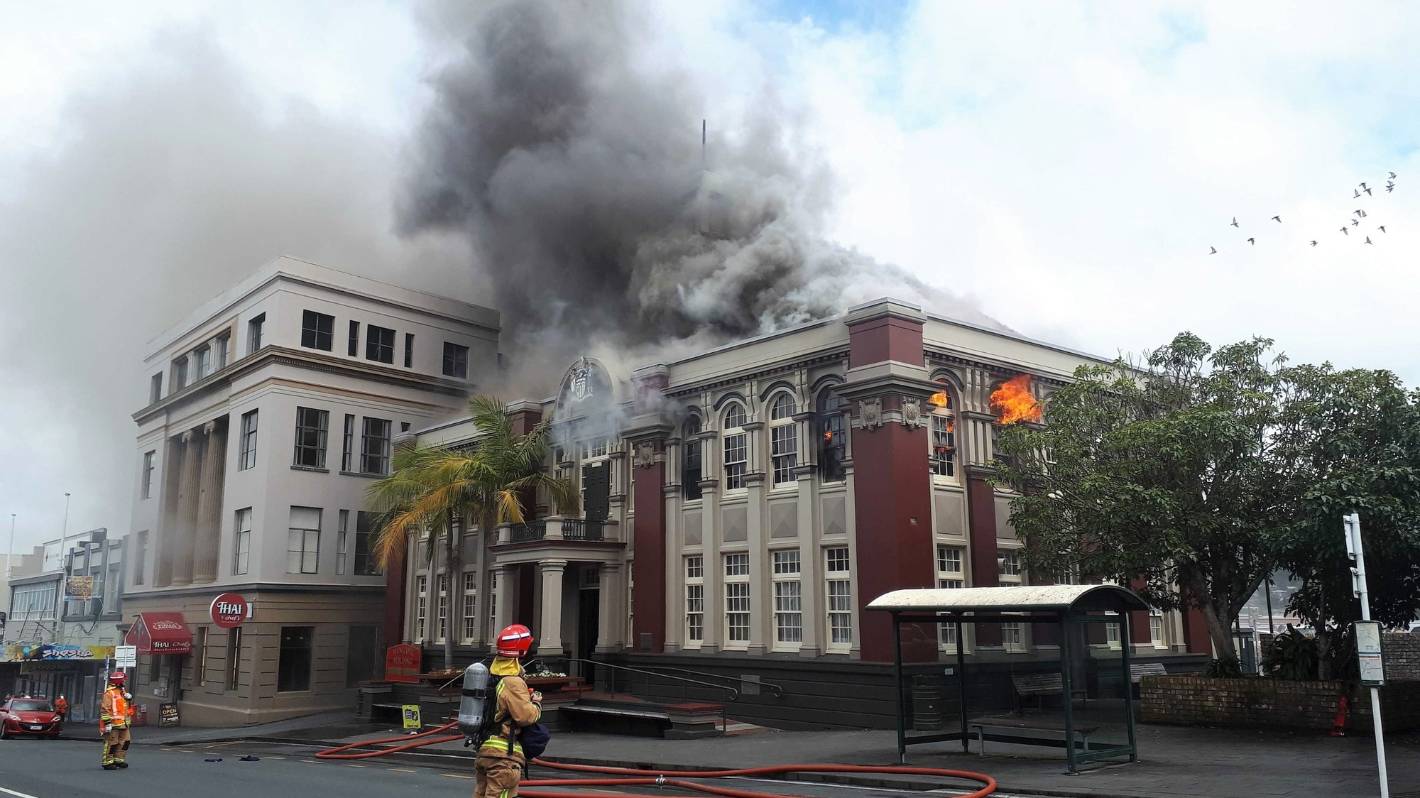Whangārei’s old town hall “eyesore” is to live on in a now $7.43 million renovation due to start by June – in spite of five of the city’s leaders wanting it demolished.
Renovation – which has gone up by more than 70% in the last three years – narrowly emerged as Whangārei District Council’s choice for the historic 111-year-old building’s future at a council meeting last Thursday.
The renovation is expected to start in May/June and be finished by Christmas 2024 – subject to the council getting resource and building consents this month.
This option came ahead of demolishing the building, keeping its façade with a new structure behind it or selling it off to a private developer.
READ MORE:
* Fire reignites as landmark building in Whangārei city centre threatened
* No start date yet for Whangārei’s fire-ravaged ‘old town hall’ restoration
* Maintenance and safety key in Northland’s $751 million share of national transport plan
Demolition would cost $1.45m and take 20 months, a council staff report said. Retaining the façade, with a new structure behind, would cost about $9.35m and take more than three years.
Fire ravaged the building on Whangārei’s Bank Street in October 2019. Three-and-a-half years later, it is still cloaked in white plastic wrap and scaffolding.
Tania Whyte/Northern Advocate
The fire in October 2019 devastated the 1912 Municipal Building, also known as the old town hall.
Councillor Carol Peters said the historic building was currently an eyesore, and she agreed with the community it was taking too long to fix. There had, however, been a huge amount of work to reach the point of being able to physically start its renovation.
“This is a building of particular significance for Whangārei,” Peters said.
Councillor Marie Olsen led the demolition charge at the meeting. She was part of a quintet calling for demolition – supported by Deputy Mayor Phil Halse and councillors Jayne Golightly, Simon Reid and Paul Yovich in a failed 5:9 vote.
Reid expressed dismay as the push to demolish the building failed.
“There are still only five with fiscal responsibility. We’re in a phase where we’re trying to allocate finances wisely. To me this is a want-to-have, not a need-to-have,” Reid said.
Denise Piper/Stuff
The building has an attractive turn-of-the-century façade and was used by community groups before the October 2019 fire.
Reid, supported by Golightly, had earlier led the same quintet in the first meeting push for a renovation alternative, which was to instead sell it to a private developer. Reid said it could be sold for $1.
This also failed in a 5:9 vote.
The vexed question of what to do about the iconic building was the focus of an intense debate lasting almost two hours, alongside two staff reports.
Renovation emerged as the council’s final choice – by a narrow 57% majority in an 8:6 vote.
Councillors Peters and Nicholas Connop led the renovation call, voting for the option, along with Mayor Vince Cocurullo and councillors Benney, Ken Couper, Deb Harding, Patrick Holmes and Scott McKenzie.
Denise Piper/Stuff
The fire ravaged the building’s clock tower, in particular, which was added in the 1950s.
Halse, Golightly, Olsen, Reid, Yovich and Phoenix Ruka voted against it.
Mayor Cocurullo said demolishing the building would be paid for out of the council’s operating budget, meaning ratepayers would pay, and it would likely require public consultation.
Deputy Mayor Halse was against the renovation. He said its financials had too many variables and the project cost would likely climb as a result.
The council, in June 2021, approved what was then to be a $4.33m restoration plan that included boosting the building’s earthquake strengthening. Thursday’s decision came with the now $7.43m renovation price tag, 71% more than in 2021.
The first council staff report said the price hike was because of increased construction costs, driven largely by labour shortages and the cost of materials due to supply chain issues.
Supplied/WDC
The badly damaged clock tower was removed from the Municipal Building and kept in safe storage so it can be repaired or replaced.
A new lift at the rear of the 1912 building is now to be part of the renovation.
The council got a building fire insurance payout of only $2.37m for material damage and business interruption in the wake of the fire.
Councillors on Thursday approved the remaining $3.25m to cover the renovation price tag increase, just over 60% of this already earmarked in the coming year’s budget.
Peters said the renovation was a council capital cost meaning it would not affect council rates.
Renovation will start with repairing fire damage, then doing earthquake strengthening, followed by internal alterations. Whangārei-based Arco Group will be the renovation’s lead contractor.
The Bank Street building Whangārei’s community now calls the old town hall was formerly, in fact, Whangārei City Council’s municipal offices. The now-car park behind this building was previously Whangārei’s town hall.
Local Democracy Reporting is Public Interest Journalism funded through NZ On Air



